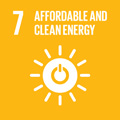- Docente: Federico Rupi
- Credits: 6
- SSD: ICAR/05
- Language: English
- Teaching Mode: In-person learning (entirely or partially)
- Campus: Bologna
-
Corso:
Second cycle degree programme (LM) in
Civil Engineering (cod. 0930)
Also valid for Second cycle degree programme (LM) in Civil Engineering (cod. 6708)
Learning outcomes
The main goals of this course are: (i) to review and explain the theoretical foundations of methods that are necessary to understand, apply and evaluate the various scientific and technological approaches which claim to improve the sustainability of transportation; (ii) to present examples of the aforementioned approaches such as alternative fuels and propulsion methods, innovative transport systems, and various taxation schemes to include external costs and attempts to change awareness. A main purpose is to make students capable to analyzing critically the potential of new approaches to sustainable transportation, rather than to give a complete coverage of all known methods proposed to date.
Course contents
- Transport systems: definition of supply, demand and supply-demand interaction
- Elements of transport supply: graphs, networks, cost functions. Practical examples.
- Demand elements: demand characteristics, approaches to demand estimation (from model, from surveys, from traffic flows). Practical examples.
- The state of the transport system: concept of assignment, relevant elements for the simulation of the state of a transport system, static and dynamic modeling, congestion phenomena. Practical examples.
- Sustainable mobility: Sustainable Urban Mobility Plans.
- Basic elements on freight transport. Practical examples.
- Drafting, during the hours of exercise, of a project relating to the macrosimulation of flows on a portion of the urban network. For the drafting of the project, the students are gathered in groups: each group must prepare a paper which is subjected to revisions by a tutor. The methodological guide for drafting the project consists of lessons held in the classroom and verifications of the proposed design solutions.
Readings/Bibliography
E. Cascetta, Transportation System Analysis: Models and Applications, Springer, 2009
M. Ben-Akiva e S. R. Lerman, Discrete Choice Analysis, The MIT Press, 1985.
Teaching methods
The course will include lectures and exercises.
Assessment methods
Students must complete a homework assignment working in groups. The homework must be reviewed and evaluated by the course tutor before taking the exam. The final exam consists of a written test with theory questions and practical exercises. Questions will concern the course contents, as listed in the syllabus. The objective of the written exam is to assess students' knowledge and their ability to apply it in a work context, using a systems approach that links the functional design of a single transportation element to the analysis of the transportation network and its effects. The final grade will be calculated based on the results of the written exam and the homework evaluation.
Teaching tools
The slides that are shown in class are made available to students through the link Virtuale Unibo. Lecture notes are made available to students too in order to complete the homework assignment.
Office hours
See the website of Federico Rupi
SDGs



This teaching activity contributes to the achievement of the Sustainable Development Goals of the UN 2030 Agenda.
